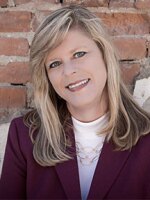COVID-19 cases are rising across the Midwest — and so are hospitalizations and deaths. Some hospitals are facing a flood of patients with fewer staff because their own employees have tested positive or are in quarantine. And they’re still seeing COVID deniers.
Dr. George Onderko is a nocturnist at Ohio State University’s Wexner Medical center and specializes in overnight care.
“I have seen illness and death on a scale that I have never seen in my career,” Onderko says. “I have admitted families. I've had to put spouses next to each other while one or both die.”
He and other doctors talked about their experiences in remote interviews for "The State of Ohio".
Onderko’s colleague at OSU, Dr. Vignesh Doraiswamy, is also a hospitalist at Nationwide Children's Hospital. He says he's seen people under 60 who've had to transition to hospice care because they caught the coronavirus.
“There's certainly multiple cases of this happening to people,” Doraiswamy says. “And I unfortunately have seen folks who I otherwise thought would do quite well, fall very, very sick. And occasionally, unfortunately, some have even passed away.”
Family physician Ean Bett with OhioHealth in Columbus says most medical professionals take COVID seriously— and personally.
“It's also a stress or strain to know that your friends and colleagues and patients may in fact be ill with COVID because the things that you see on the news are real,” Brett says. “People are getting very sick.”
Dr. Carla O’Day directs emergency services at St. Vincent Charity Hospital in Cleveland and St. John Medical Center in Westlake. She thinks these numbers could be traced back to Halloween gatherings and events, which has her worried about the upcoming holidays.
“Anybody that believes this is a hoax, I mean, I've seen this virus. I've seen people become so incredibly ill with pneumonia and what it does to their lungs and they deteriorate so quickly that I have great respect for the virus and what it can do.” O’Day says. “And it's got some long term effects on it, too.”
That's what concerns Rick Lucas, who heads the 4,200 member Ohio State University nurses organization, especially when he hears people say that nearly everyone who gets COVID won't die.
“That doesn't take into account the decreased lung capacity that you could have or the stroke you can have after or the cardiac complications that you're going to carry with you your entire life,” Lucas says. “You might not ever recover back to baseline to what you were, to the level of function that you had before COVID.”
Onderko says he's been confronted by COVID patients who say they can't have the disease because it doesn't exist.
“Every night, every night we deal with folks who don't believe they have COVID,” Onderko says. “It doesn't matter if you don't believe in COVID because it believes in you.”
It's happened to Doraiswamy, too.
“I've had patients who are on high amounts of oxygen tell me, ‘What do I really have? I don't think I have COVID.’ And I don't know what to tell them,” Doraiswamy says. “Sometimes I said, look, I gain nothing by lying to you. But this is - we tested you for it, your chest CT, the scan shows us that your lung has been affected by it. You're on a fair amount of oxygen and you're telling me you're working hard to breathe. Like, this isn't a lie. This is what's happening.”
Medical professionals have been fighting the coronavirus for nine months, with the worst part of the war potentially to come with a double shot of flu season and COVID fatigue. And with that happening now and into the future, O’Day says the turnaround on people's attitudes is sometimes hard to take.
“When this first started, we had signs in our neighborhood that said, ‘you are a hero, thank you.’ Now, you know, there was some information out that we were diagnosing COVID because we got more money for that diagnosis,” O’Day says. “I mean, how ridiculous is that? So it's been a very difficult time and that ‘hero’ part seems to have faded away.”
And Lucas says misinformation is dangerous.
“It seems a lot that the folks that want to exclaim that type of thing want to excuse their bad behavior and lack of caring for others and don't want to wear a mask,” Lucas says. “And they try to justify that. It's very contagious. It's very devastating, and it is very much overwhelming our health care systems right now.”
Onderko summed up the fears and advice of the medical community for the coming weeks.
“I hear a lot of the recommendations coming up for the holidays. You know, ‘don’t gather with 10 or more this, that and the other’. Don't gather with anybody. Just stay home. It's bad,” Onderko says.
Karen Kasler is the Statehouse Bureau Chief for Ohio Public Radio and TV.
Copyright 2020 Side Effects Public Media. To see more, visit Side Effects Public Media.




